Do you have a question about the Samsung C24RG50 and is the answer not in the manual?
Ensures adequate ventilation space around the monitor to prevent overheating and damage.
Important warnings and cautions regarding product usage, electrical safety, and handling.
Guidelines for safely cleaning the monitor's panel and exterior surfaces.
Detailed safety instructions for connecting and using the product's power supply.
Critical warnings for installing the product safely, avoiding heat sources and unstable surfaces.
Precautions for handling the product during installation, avoiding drops and improper placement.
Essential warnings for operating the monitor, including high voltage, disassembly, and child safety.
Precautions for operation to prevent screen damage, eye strain, and fire hazards.
Identifies and describes the main components of the monitor.
Detailed explanation of the JOG button's functionality and usage.
Information regarding the power indicator light and its operational states.
Explanation of the Function Key Guide display and its navigation options.
Navigating the product's menu system using the Function Key Guide.
Changing the input source via the Function Key Guide.
Enabling or disabling the Eye Saver Mode for reduced eye strain.
Using the Function Key Guide to turn off the product.
Important precautions to follow when attaching the monitor stand to avoid damage.
Precautions to take when removing the monitor stand to prevent damage or injury.
Preliminary checks and steps before connecting external devices to the monitor.
Guides on connecting the monitor to a PC using HDMI or HDMI-DVI cables.
Detailed steps for connecting the monitor using an HDMI cable.
Detailed steps for connecting the monitor using an HDMI-DVI cable.
Instructions for connecting the monitor to a PC using a DisplayPort (DP) cable.
Guide on how to connect headphones for audio output from the monitor.
Steps for connecting the monitor to a power source via the AC/DC adapter.
Guidelines for maintaining proper posture while using the monitor to prevent fatigue.
Instructions on how to install the necessary drivers for optimal monitor performance.
Guidance on setting the monitor's resolution to the optimal display setting.
Optimizing picture quality for various PC gaming genres like FPS, RTS, and RPG.
Selecting picture modes (Dynamic, Standard, Movie, Custom) for AV input sources.
List of AMD graphics card models that support FreeSync technology.
Selecting different styles for the virtual aim point.
Restoring the virtual aim point to its default position.
Confirming and fixing the aim point position after adjustment.
Procedure for resetting the aim point to the center position.
Optimizing picture quality for various PC gaming genres like FPS, RTS, and RPG.
Selecting picture modes (Dynamic, Standard, Movie, Custom) for AV input sources.
Setting the display language for the on-screen menu.
Specifying the time after which the OSD menu will automatically disappear.
Running a diagnostic test to check monitor functionality and identify issues.
Viewing a test photo to assess picture quality and screen issues.
Interpreting self-diagnosis results and troubleshooting steps.
Adjusting audio volume and using the Mute function.
Reducing power consumption by adjusting screen brightness automatically.
Configuring automatic power-off timers (Off Timer, Eco Timer).
Selecting DisplayPort version and HDMI mode for optimal connectivity.
Setting input mode and configuring source detection for input signals.
Displaying current input source, resolution, frequency, and product version.
Instructions for installing and using the Easy Setting Box software for screen partitioning.
Hardware and OS requirements for installing the Easy Setting Box software.
Steps to test the product before contacting Samsung Customer Service.
Using Self Diagnosis to check for monitor screen issues.
Troubleshooting unsupported resolutions or frequency settings.
Resolving problems related to screen switching or blank spaces during PC connection.
Addressing common screen problems like distortion, blurriness, or instability.
Troubleshooting blurry text by adjusting ClearType settings.
Addressing choppy video playback and suggesting alternative players.
Troubleshooting no sound or low volume problems, and HDMI-DVI cable limitations.
Addressing issues related to the source device, such as beeping sounds during boot.
Instructions for changing the screen frequency via graphics card settings.
Steps to change the screen resolution in Windows operating systems.
Instructions for setting up power-saving modes in Windows.
Technical details including model name, size, display area, and power supply.
Information on the available signal connectors like HDMI and DisplayPort.
Operating and storage temperature and humidity ranges for the monitor.
Conditions under which service charges may apply, even within warranty.
List of damages considered customer fault and not covered by warranty.
Other situations where service may be charged, including natural disasters and consumables.
Ensures adequate ventilation space around the monitor to prevent overheating and damage.
Important warnings and cautions regarding product usage, electrical safety, and handling.
Guidelines for safely cleaning the monitor's panel and exterior surfaces.
Detailed safety instructions for connecting and using the product's power supply.
Critical warnings for installing the product safely, avoiding heat sources and unstable surfaces.
Precautions for handling the product during installation, avoiding drops and improper placement.
Essential warnings for operating the monitor, including high voltage, disassembly, and child safety.
Precautions for operation to prevent screen damage, eye strain, and fire hazards.
Identifies and describes the main components of the monitor.
Detailed explanation of the JOG button's functionality and usage.
Information regarding the power indicator light and its operational states.
Explanation of the Function Key Guide display and its navigation options.
Navigating the product's menu system using the Function Key Guide.
Changing the input source via the Function Key Guide.
Enabling or disabling the Eye Saver Mode for reduced eye strain.
Using the Function Key Guide to turn off the product.
Important precautions to follow when attaching the monitor stand to avoid damage.
Precautions to take when removing the monitor stand to prevent damage or injury.
Preliminary checks and steps before connecting external devices to the monitor.
Guides on connecting the monitor to a PC using HDMI or HDMI-DVI cables.
Detailed steps for connecting the monitor using an HDMI cable.
Detailed steps for connecting the monitor using an HDMI-DVI cable.
Instructions for connecting the monitor to a PC using a DisplayPort (DP) cable.
Guide on how to connect headphones for audio output from the monitor.
Steps for connecting the monitor to a power source via the AC/DC adapter.
Guidelines for maintaining proper posture while using the monitor to prevent fatigue.
Instructions on how to install the necessary drivers for optimal monitor performance.
Guidance on setting the monitor's resolution to the optimal display setting.
Optimizing picture quality for various PC gaming genres like FPS, RTS, and RPG.
Selecting picture modes (Dynamic, Standard, Movie, Custom) for AV input sources.
List of AMD graphics card models that support FreeSync technology.
Selecting different styles for the virtual aim point.
Restoring the virtual aim point to its default position.
Confirming and fixing the aim point position after adjustment.
Procedure for resetting the aim point to the center position.
Optimizing picture quality for various PC gaming genres like FPS, RTS, and RPG.
Selecting picture modes (Dynamic, Standard, Movie, Custom) for AV input sources.
Setting the display language for the on-screen menu.
Specifying the time after which the OSD menu will automatically disappear.
Running a diagnostic test to check monitor functionality and identify issues.
Viewing a test photo to assess picture quality and screen issues.
Interpreting self-diagnosis results and troubleshooting steps.
Adjusting audio volume and using the Mute function.
Reducing power consumption by adjusting screen brightness automatically.
Configuring automatic power-off timers (Off Timer, Eco Timer).
Selecting DisplayPort version and HDMI mode for optimal connectivity.
Setting input mode and configuring source detection for input signals.
Displaying current input source, resolution, frequency, and product version.
Instructions for installing and using the Easy Setting Box software for screen partitioning.
Hardware and OS requirements for installing the Easy Setting Box software.
Steps to test the product before contacting Samsung Customer Service.
Using Self Diagnosis to check for monitor screen issues.
Troubleshooting unsupported resolutions or frequency settings.
Resolving problems related to screen switching or blank spaces during PC connection.
Addressing common screen problems like distortion, blurriness, or instability.
Troubleshooting blurry text by adjusting ClearType settings.
Addressing choppy video playback and suggesting alternative players.
Troubleshooting no sound or low volume problems, and HDMI-DVI cable limitations.
Addressing issues related to the source device, such as beeping sounds during boot.
Instructions for changing the screen frequency via graphics card settings.
Steps to change the screen resolution in Windows operating systems.
Instructions for setting up power-saving modes in Windows.
Technical details including model name, size, display area, and power supply.
Information on the available signal connectors like HDMI and DisplayPort.
Operating and storage temperature and humidity ranges for the monitor.
Conditions under which service charges may apply, even within warranty.
List of damages considered customer fault and not covered by warranty.
Other situations where service may be charged, including natural disasters and consumables.
| Screen Size | 24 inches |
|---|---|
| Panel Type | VA |
| Resolution | 1920 x 1080 |
| Refresh Rate | 144 Hz |
| Response Time | 4 ms (GTG) |
| Brightness | 250 cd/m² |
| Contrast Ratio | 3000:1 |
| Aspect Ratio | 16:9 |
| Connectivity | HDMI, DisplayPort |
| Curvature | 1500R |
| AMD FreeSync | Yes |
| Viewing Angle | 178° (H) / 178° (V) |
| Color Support | 16.7 million colors |
| HDMI Ports | 2 |
| DisplayPort | 1 |
| VESA Mount | 100 x 100 mm |
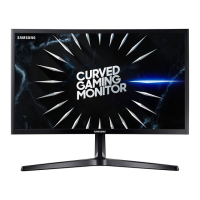
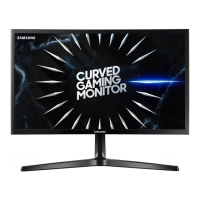

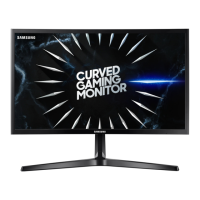
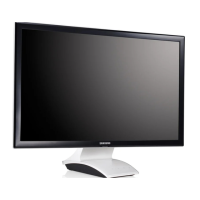
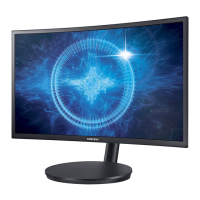
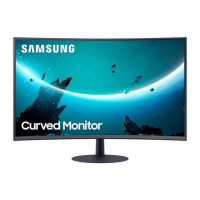
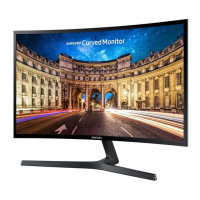
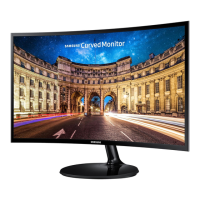
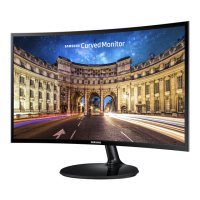
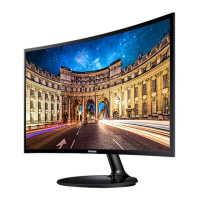
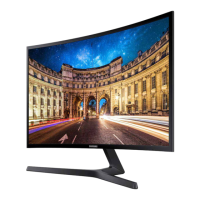
